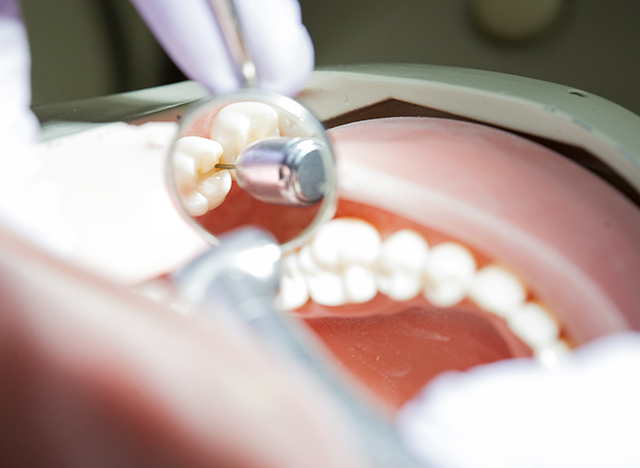How to use a dental mirror and explorer: A lighthearted look into the details of dentistry

It’s a basic yet crucial component of dentistry. Learning how to use a dental mirror and explorer is essential for performing patient exams, and mastery of the mirror comes into play when the high-speed handpiece portion of the curriculum begins. Using a dental mirror and explorer isn’t difficult, per se, but it takes persistence and patience when the skill is first introduced.
Third-year dental students at Texas A&M University Baylor College of Dentistry begin patient care in clinic this week, which makes it a fitting time to recap this particular skill, which they have honed over the past two years of their education.
The most important thing to remember when using a dental mirror and explorer is to find a good finger rest — a spot, literally — to rest the fingers when examining a patient.
“It should be on sound tooth structure — a molar or bicuspid, usually — as opposed to soft tissue,” says Dr. Christine Beninger, associate professor in restorative sciences, who instructs first- and-second year students in preclinical operative dentistry and oversees the second-year clinical practice simulation course. She also is the director of the third-year Operative and Dental Auxiliary Utilization clinics. “If you don’t have a good finger rest and the patient coughs or moves, the explorer could lacerate the cheek or tongue.” Even though the dental mirror has blunt, rounded edges, Beninger advises that both hands should have suitable finger rests.

The time it can take to become adept at this technique — and the ability to see tooth structures in reverse through a mirror — can vary from student to student.
“From my experience there are generally two different types of learners,” explains Beninger. “In one instance the more the student practices using the mirror, the easier it becomes. The other learner is the ‘light switch’ type. On day 60, for example, it’s just as difficult using the mirror as it was on day one, but on day 61, it’s as though you switched on a light switch and using the mirror is no problem at all.”
For those “light switch” learners out there, Beninger has a bit of advice: “Just be patient with yourself, and remember, if you’ve ever played a musical instrument or a sport, you know that it takes practice to become accomplished. It’s the same way with dentistry, and with learning how to use the mirror and explorer.”